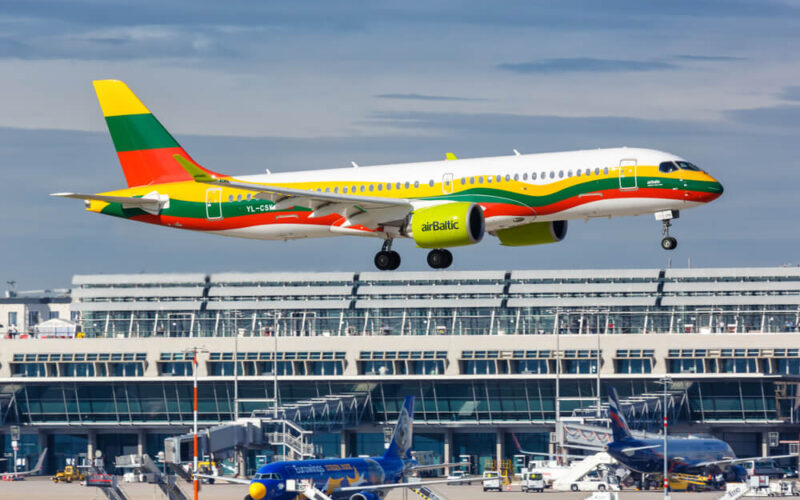After the Boeing 737 MAX was grounded in March 2019 and the passing time revealed that the groundings would continue, seemingly, into infinity, airlines scrambled to replace the capacity gap left by the absence of Boeing’s narrow-body. Amidst the discussions to replace the grounded plane, one of the options was carriers switching to the Airbus A320neo, a direct rival to the 737 MAX and the one aircraft that prompted Boeing to upgrade the 737 Next Generation.
However, apart from the complexities and associated costs of introducing a new aircraft into the fleet, there is another problem: Airbus’ backlog is filled. So much so, that when the manufacturer announced its 2019 financial results, Chief Executive Officer (CEO) Guillaume Faury noted that the company has its hands full with the A320 family until 2025, meaning a new order today would result in delivery in 2026. Faury also reiterated that Airbus is very loyal to its current customers, so fitting a delivery slot before 2026 would be a difficult task for those that seek to replace the 737 MAX with the A320neo, quickly.
What about the other Airbus narrow-body, the A220?
Juggling operating costs and a different operating segment
At the same time, as Faury stated, the former-CSeries aircraft could be an option for those that are looking to replace the grounded aircraft of its competitor. But the A220 is not a direct replacement to the 737 MAX: after all, the Quebec, Canada and Mobile, Alabama-built jet operates in a lower segment in terms of its capacity.
But it is not far off: while the A220-300 and the Boeing 737 MAX 8 are on completely different leagues capacity-wise and cannot realistically compete with each other, the competition between the biggest A220 version and the smallest MAX is much closer. Boeing’s product has the upper hand in range, the number of passengers who can travel on the two jets is very similar, especially in a two-class configuration.
Yet the added range is, arguably, the biggest downfall of the MAX when comparing it to the A220-300: to travel the added distance, the aircraft has a higher Maximum Zero Fuel Weight (MZFW): 62.9 tonnes compared to the Airbus’ jet MZFW of 55.8 tonnes. The bigger weight, excluding fuel, immediately points to the fact that it is more expensive to fly the MAX 7. Furthermore, Boeing’s product is far more expensive outright to purchase. The manufacturer lists the current price for the smallest iteration of the 737 at $99.7 million, while the A220-300 is listed at $91.5 million.
While the prices are preliminary, confidential and differ on a case by case basis, they help in painting a clearer picture regarding the final cost of a jet. The lower acquisition price means the airline flying the jet has less pressure on yields, as there are fewer costs to recover.
The differencing demand
In a way, the demand for both jets showcases that the A220-300 is by far the more popular product. The aircraft, previously marketed as the CS300, amassed 563 total orders as of January 31, 2020. Meanwhile, the Boeing 737 MAX 7 has received little-to-none attention compared to its bigger brother, the MAX 8, and the A220-300: Southwest (30), WestJet (25) are the only confirmed customers of the MAX 7, Boeing data indicates. While the current MAX crisis is certainly affecting airlines’ wishes to order the jet, prior to the groundings, Boeing had a backlog of over 5,000 MAX aircraft, according to a press release dating February 27, 2019.
And delivering aircraft from the backlog is a challenge for both manufacturers. For example, an analysis by Leeham News concluded that Boeing would deliver the current backlog of its 737 MAX jets only in 2026 if no new orders are given delivery slots between now and 2025. For Airbus, the delivery rates of the Airbus A220 are still ramping up: the European manufacturer delivered 48 aircraft of the type in 2019. Guillaume Faury, during a press conference discussing Airbus’ 2019 financial results, indicated that the company can potentially deliver 160 units per year, with 10 jets coming out of Mirabel, Quebec, Canada and four out of the Mobile, Alabama, United States Final Assembly Lines’ (FAL).
As of January 31, 2020, Airbus still has to build and deliver 551 aircraft to customers, meaning an airline could theoretically receive a jet from the two FAL’s in a much shorter time.
However, one advantage costs-wise the 737 MAX 7 has is the commonality with the 737 Next Generation aircraft, ensuring a smooth and low-cost transition for those that work with the aircraft, including pilots, engineers and cabin crew. The pool of pilots, engineers, cabin crew, as well as the number of maintenance and training centers for the 737, is much higher than for the A220. For example, only two organizations are certified to conduct heavy maintenance on the A220 in Europe: airBaltic and SAMCO, Netherlands-based maintenance, repair and operation (MRO) company.

